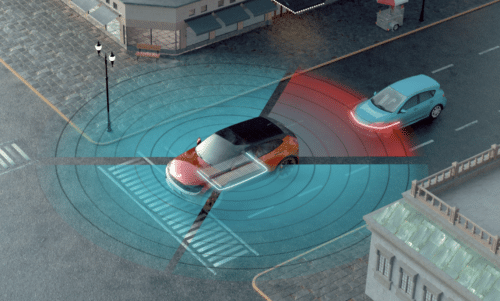- The inaugural single-chip radar sensor explicitly developed for satellite-based configurations offers the potential to extend vehicle sensing distances to over 200 meters, enhancing the precision of advanced driver assistance systems (ADAS) decision-making.
- The latest driver chips provide secure and efficient power flow control for battery management and other powertrain systems.
- They have functional safety features and built-in diagnostics, streamlining the development process.

Texas Instruments has unveiled semiconductor solutions to enhance automotive safety and intelligence. The AWR2544, a 77GHz millimetre-wave radar sensor chip, marks an industry-first for satellite radar architectures, promising elevated levels of autonomy through improved sensor fusion and decision-making within advanced driver assistance systems (ADAS). In addition, the company has introduced new software-programmable driver chips: the DRV3946-Q1, an integrated contactor driver, and the DRV3901-Q1, an integrated squib driver for pyro fuses. These driver chips have built-in diagnostics and support functional safety in battery management and powertrain systems. The company is currently showcasing these products at the 2024 Consumer Electronics Show (CES).
Enhancing Radar Performance for Enhanced ADAS Decision-Making
In pursuit of heightened vehicle safety and autonomy, numerous automakers are augmenting their sensor arrays. The company’s AWR2544 stands out as the industry’s pioneer in radar sensors tailored for satellite architectures. Within these satellite architectures, radar sensors yield semi-processed data directed to a central processor for ADAS decision-making, leveraging sensor fusion algorithms and the comprehensive 360-degree sensor coverage to achieve elevated levels of vehicle safety.
The single-chip radar sensor introduces groundbreaking Launch-On-Package (LOP) technology, an industry-first. LOP technology streamlines sensor dimensions by up to 30%, accomplishing this by mounting a 3D waveguide antenna on the reverse side of the printed circuit board. Furthermore, LOP technology empowers sensor ranges to extend beyond the 200-meter threshold using a single chip. In the realm of satellite architectures, these capabilities empower automakers to elevate ADAS intelligence, enabling more advanced vehicle autonomy by making discerning decisions from greater distances. This radar sensor catering to a wide spectrum of ADAS applications and architectural needs, including sensors tailored for corner, front, imaging, side, and rear radar systems.
Make electric powertrain systems smarter with integrated functionality and safety
The transition towards software-defined vehicles presents a formidable challenge to designers who must develop more sophisticated and intelligent Battery Management Systems (BMS). To meet these demands, the company introduces two cutting-edge, highly integrated, and software-programmable driver chips that cater to the requirements of safer and more efficient control of high-voltage disconnect circuits within BMS and other powertrain systems. Both of these drivers comply with the International Organization for Standardization (ISO) 26262 functional safety standards and come equipped with built-in diagnostics and protective features, effectively streamlining the development process for automotive engineers.
For BMS and similar powertrain systems, the DRV3946-Q1 represents the industry’s inaugural fully integrated contactor driver. It features a peak-and-hold current controller that assists automakers in enhancing system power efficiency. Additionally, this device incorporates safety diagnostics to continuously monitor the condition of the contactor.
It is a fully integrated squib driver, facilitates an intelligent pyro fuse disconnect system by utilizing embedded circuitry to monitor the pyro fuse and offer diagnostic data to the system’s microcontroller. This innovative approach grants flexibility to BMS designers in hybrid electric vehicles (HEVs) and electric vehicles (EVs) by enabling the utilization of a pyro fuse as an alternative to conventional melting fuse systems, while simultaneously minimizing design complexities.
Fern Yoon, the Director of Automotive Systems at Texas Instruments, emphasised the role of semiconductor innovations showcased at this year’s CES in driving advancements in automotive systems. These innovations are enhancing advanced driver assistance systems and making electric vehicle powertrain systems smarter. The company is collaborating closely with automakers to envision a future where dependable and intelligent technology plays a pivotal role in creating safer vehicles.
For further details, please click here.






